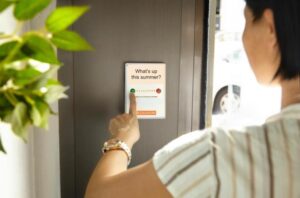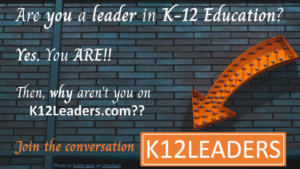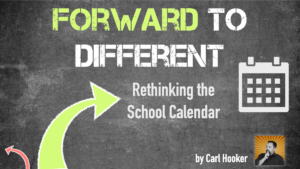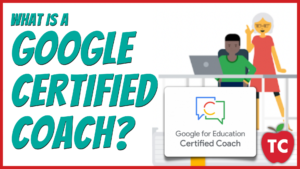Breaking Down Barriers: Why AAC Access is Critical for Educational Equity
Communication is more than just words—it’s the foundation of human connection, learning, and self-expression. For many K-12 students with communication disabilities, Augmentative and Alternative Communication (AAC) devices and software represent the difference between silence and having a voice, between isolation and inclusion, between academic struggle and success.
Yet across our educational system, a troubling disparity exists. While some students have access to the AAC tools they need to thrive, countless others remain voiceless in their classrooms, unable to fully participate in the learning experiences that are their fundamental right.
The Academic Impact: More Than Just Grades
When students lack access to appropriate AAC devices and software, the consequences extend far beyond test scores. These essential tools serve as gateways to classroom participation, allowing students to engage with educational content, express their understanding, and demonstrate their literacy skills. Without them, students face barriers that can seem insurmountable.
The ripple effects are profound. Students who cannot communicate effectively in academic settings often experience long-term underachievement, not because they lack ability or potential, but because they lack the tools to express what they know. This educational disadvantage follows them throughout their academic journey, limiting future opportunities and closing doors that should remain open.
The Human Cost: Social and Emotional Well-being
Beyond academics lies an even more concerning impact on social and emotional development. Students denied effective communication tools frequently experience social isolation, mounting frustration, and diminished self-esteem. These challenges create a devastating cycle where disengagement from school compounds academic difficulties, leading to further isolation and diminished confidence.
When we fail to provide AAC access, we’re not just limiting academic potential—we’re affecting the fundamental human need for connection and self-expression that shapes a young person’s entire sense of self and place in the world.
The time for action is now. Every day that passes without addressing AAC access disparities represents lost opportunities for students who simply need the right tools to unlock their potential.
A Foundation Built on Core Values
Addressing this disparity isn’t just an educational imperative—it’s a reflection of our deepest values as educators and community members:
Respect means creating learning environments where every student’s communication needs are acknowledged and supported, fostering appreciation for the diverse ways people express themselves.
Collaboration requires building partnerships between educators, families, speech-language pathologists, and technology specialists to ensure comprehensive AAC support.
High Expectations means refusing to lower our academic standards for students with communication disabilities, instead providing them with the tools they need to meet rigorous benchmarks.
Responsibility involves empowering students to become independent communicators and learners, taking ownership of their educational journey.
Equity demands that we provide all students with access to curriculum through quality instruction and appropriate communication tools.
Empowerment means building communities where every student can contribute their unique voice and perspective.
Transforming Education Through Inclusive Design
Investing in AAC accessibility creates a transformative ripple effect throughout our educational system. When we ensure that all students can communicate effectively, we enhance curriculum accessibility for everyone. Universal design principles benefit not just students with disabilities, but create more engaging and inclusive learning experiences for all learners.
This investment also supports teachers in developing new instructional design practices, building their capacity to create truly inclusive classrooms where every student can participate fully. The professional growth and collaboration that emerge from this work strengthens our entire educational community.
Economic and Social Returns on Investment
This isn’t just about meeting immediate educational needs—it’s about investing in our community’s future. Students who can communicate effectively are more likely to graduate, pursue higher education, and contribute meaningfully to our workforce and economy. The long-term economic benefits of ensuring AAC access far exceed the initial investment costs.
Moreover, this is fundamentally an issue of social equity and justice. When we provide all students with the communication tools they need, we take a crucial step toward creating a more inclusive society where everyone can participate fully in community life.
The Path Forward
The time for action is now. Every day that passes without addressing AAC access disparities represents lost opportunities for students who simply need the right tools to unlock their potential. These students have voices waiting to be heard, ideas ready to be shared, and contributions that can enrich our entire educational community.
Creating equitable access to AAC devices and software isn’t just the right thing to do—it’s an investment in a future where communication barriers no longer determine educational outcomes, where every student has the opportunity to learn, grow, and thrive.
The question isn’t whether we can afford to make this investment. The question is whether we can afford not to. Our students—and our future—depend on the answer.
Kim Zajac, is a certified SLP and Audiologist in Massachusetts. She is an ASCD/ISTE Community Leader, Educator Mentor for the Vital Prize Challenge, an Adobe Creative Educator Leader and Magic School Ambassador. Kim has served as a virtual practicum instructor at Speech@Emerson and is Co-Founder of EdCampSoutheasternMA. She is an FETC Featured Speaker and has presented at ASU GSV AIRShow, SXSWEDU, ISTE, MassCUE, & NYC Schools Tech Summit. Kim specializes in creating programs and sharing learning strategies to support students with diverse learning needs. She is passionate about establishing equitable access and inclusion for ALL students. You can connect with Kim at KimZajac.com







